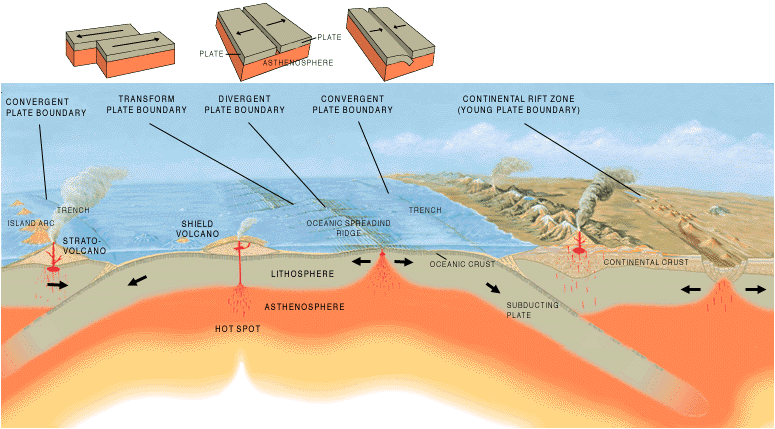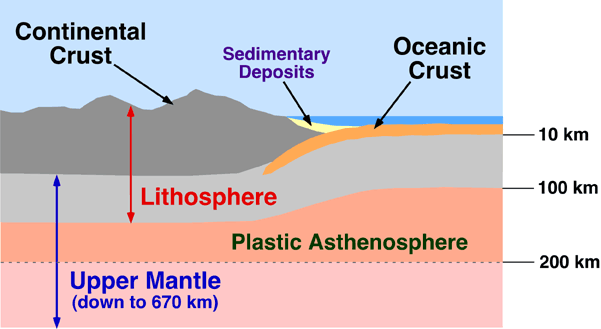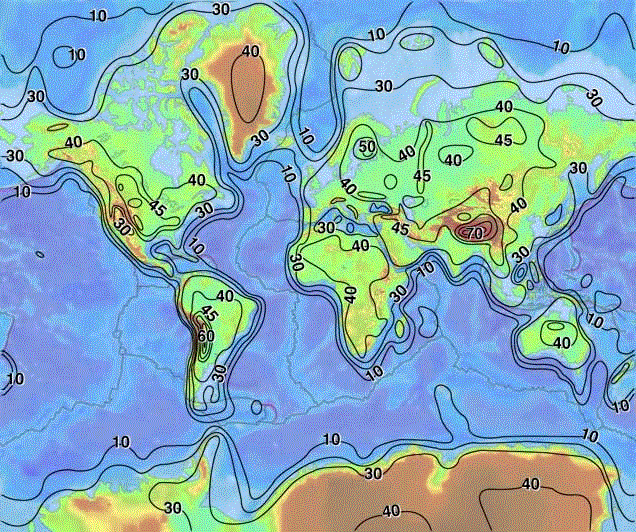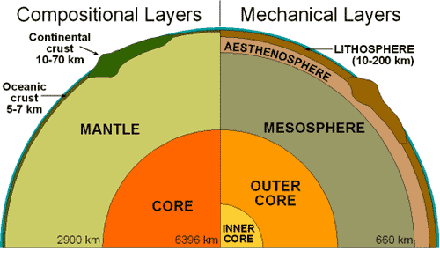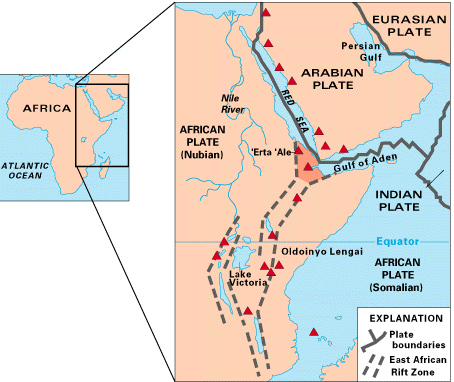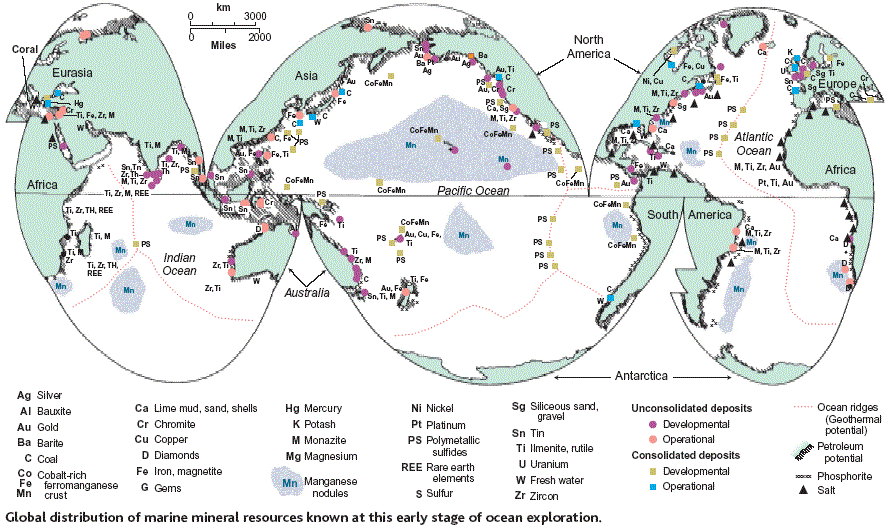 〔W. Jacquelyne Kious and Robert I. TillingによるThis Dynamic Earth: the Story of Plate Tectonicsから〕 15枚のプレート。プレートテクトニクスは、これらのプレートが水平運動を行うことによって起こる地質現象を説明するモデルである。地球内部の熱と物質は、とくにプレートの境界部に沿って地表へ流出するため、火山活動や地震の発生もこれらの境界部に多い。 |
|
|
(km2) |
|
| 1 | Pacific(太平洋プレート) | 103,280,000 |
| 2 | North American(北アメリカプレート) | 75,888,000 |
| 3 | Eurasian(ユーラシアプレート) | 67,811,000 |
| 4 | African(アフリカプレート) | 61,334,000 |
| 5 | Antarctic(南極プレート) | 60,916,000 |
| Indo-Australian(インド・オーストラリアプレート) | ||
| 6 | Australian | 47,152,000 |
| 7 | South American(南アメリカプレート) | 43,617,000 |
| 8 | Somali | 16,667,000 |
| 9 | Nazca(ナスカプレート) | 15,630,000 |
| 10 | Indian(インドプレート) | 11,920,000 |
| 11 | Philippine(フィリピン海プレート) | 5,447,000 |
| 12 | Arabian(アラビアプレート) | 5,010,900 |
| 13 | Caribbean(カリブプレート) | 3,319,000 |
| 14 | Cocos(ココスプレート) | 2,860,000 |
| 15 | Caroline microplate(カロライナプレート) | 1,720,000 |
|
|
Scotia |
1,651,000 |
|
|
Fiji microplates | 1,144,000 |
| 18 | Burma microplate(ビルマプレート) | 1,110,000 |
| 19 | Tonga microplate(トンガプレート) | 962,000 |
| 20 | Mariana microplate | 364,000 |
|
|
Bismark microplate(North Bismarck/South Bismarck)(北ビスマルクプレート/南ビスマルクプレート) |
286,000 |
| 22 | Solomon microplate(ソロモン海プレート) | 254,000 |
| 23 | Juan de Fuca(ファンデフカプレート) | 252,000 |
| 24 | South Sandwich microplate | 166,000 |
| 25 | Easter microplate(イースタープレート) | 133,000 |
| 26 | Juan Fernandez microplate | 96,000 |
| 27 | Rivera microplate | 73,000 |
| 28 | Gorda microplate | 69,600 |
| 29 | Explorer microplate | 18,400 |
| 30 | Galapagos microplate | 12,000 |
|
W. K. Brown・K. H. Wohletzの両氏によるSFT
and the Earth's Tectonic Platesから。 リンクはフリー百科事典『ウィキペディア(Wikipedia)』。 |
||
